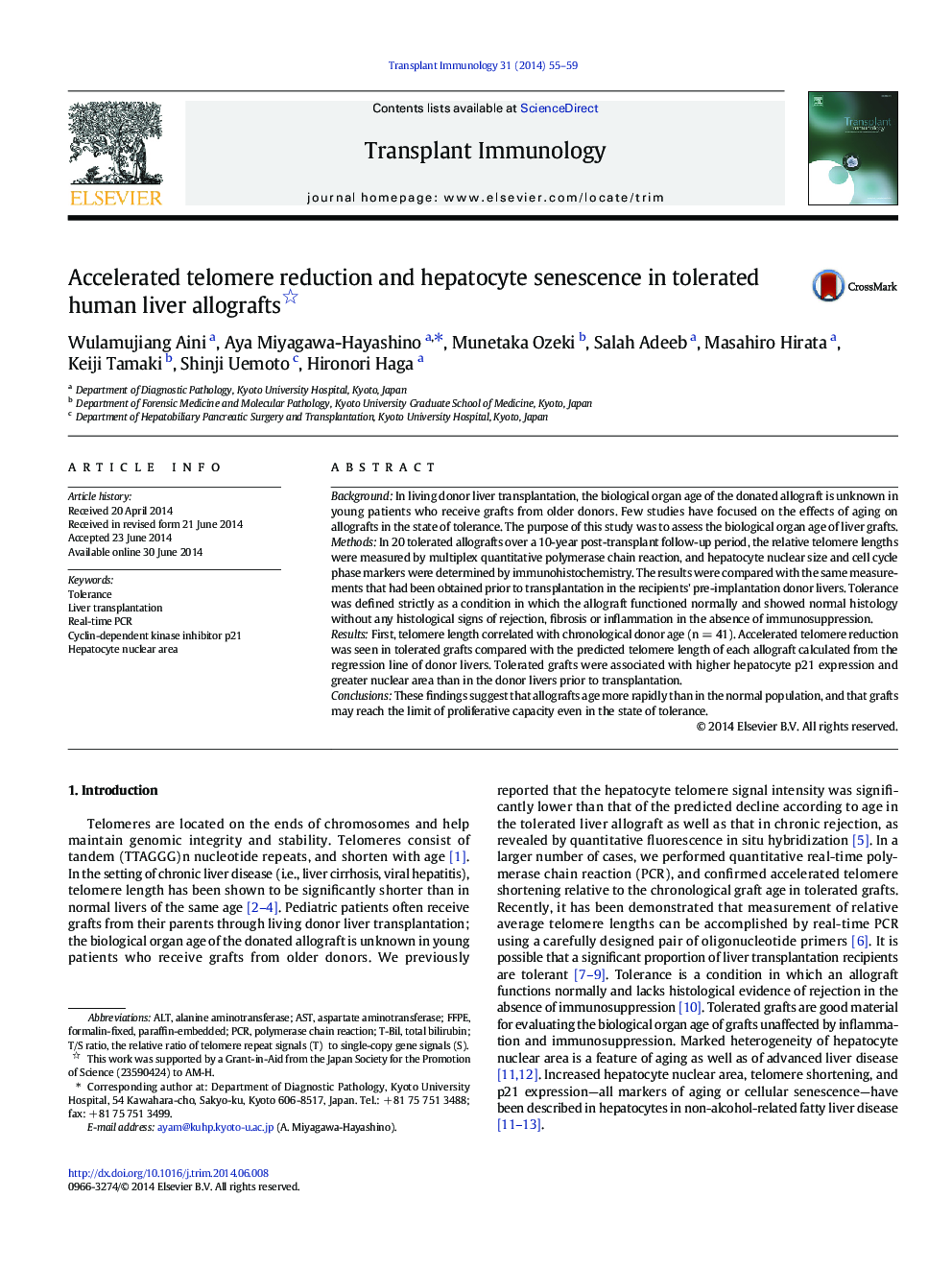| کد مقاله | کد نشریه | سال انتشار | مقاله انگلیسی | نسخه تمام متن |
|---|---|---|---|---|
| 3392079 | 1221189 | 2014 | 5 صفحه PDF | دانلود رایگان |
• Telomeres were shorter than expected for graft age in tolerated liver allografts.
• Features of cellular senescence were examined in tolerated grafts.
• Tolerated grafts had greater hepatocyte nuclear area than donor livers.
• Tolerated grafts were associated with higher p21 expression than donor livers.
BackgroundIn living donor liver transplantation, the biological organ age of the donated allograft is unknown in young patients who receive grafts from older donors. Few studies have focused on the effects of aging on allografts in the state of tolerance. The purpose of this study was to assess the biological organ age of liver grafts.MethodsIn 20 tolerated allografts over a 10-year post-transplant follow-up period, the relative telomere lengths were measured by multiplex quantitative polymerase chain reaction, and hepatocyte nuclear size and cell cycle phase markers were determined by immunohistochemistry. The results were compared with the same measurements that had been obtained prior to transplantation in the recipients' pre-implantation donor livers. Tolerance was defined strictly as a condition in which the allograft functioned normally and showed normal histology without any histological signs of rejection, fibrosis or inflammation in the absence of immunosuppression.ResultsFirst, telomere length correlated with chronological donor age (n = 41). Accelerated telomere reduction was seen in tolerated grafts compared with the predicted telomere length of each allograft calculated from the regression line of donor livers. Tolerated grafts were associated with higher hepatocyte p21 expression and greater nuclear area than in the donor livers prior to transplantation.ConclusionsThese findings suggest that allografts age more rapidly than in the normal population, and that grafts may reach the limit of proliferative capacity even in the state of tolerance.
Journal: Transplant Immunology - Volume 31, Issue 2, August 2014, Pages 55–59
